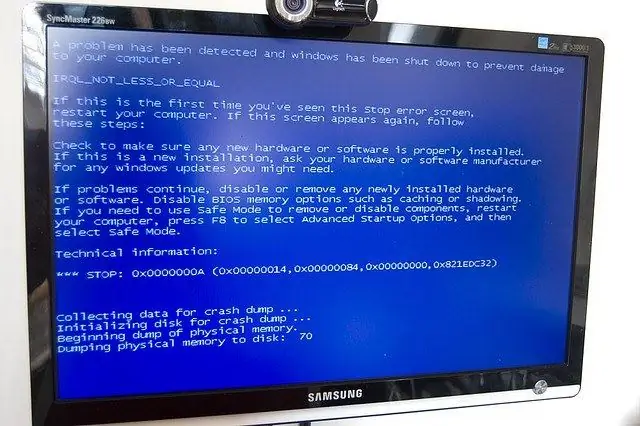A blue screen, also called a STOP error, occurs when the problem is so severe that the operating system is forced to stop. Usually the problem is related to the driver or hardware of the computer.

Detecting a problem with a STOP code
Most blue screens will show a STOP code indicating the origin of the problem. Depending on the type of STOP code, it can take up to several hours to fix the blue screen of death.
How to fix Blue Screen of Death issue
In Windows vista, as well as in the operating systems Windows XP, Windows 7, Windows 8, elimination of the blue screen should start by asking what you just did. You may have installed new software, hardware, or updated your driver.
Return your computer to its previous state and check if the blue screen reappears. To do this, restart the computer using the last known system configuration, apply System Restore, or return the driver to an earlier state.
Check disk segmentation. It is important that there is some free space on it. The Blue Screen of Death often appears when there is no free space left on the main system drive used for the operating system.
Microsoft recommends that you have at least 100 MB of free memory on the disk. But it is better that the free space remains about 15%.
Scan your computer for viruses. Some of them can cause a blue screen, especially those that infect the Master Boot Record (MBR) or the boot sector on the disk. It is important that the virus scan is updated and configured to scan the aforementioned components of the system.
Apply all possible Windows Service Packs that Microsoft releases for their operating systems. They may contain elements to eliminate blue screen.
Update the drivers on your computer hardware.
Check the system and application logs using Event Viewer for possible errors or warnings that could indicate the cause of the blue screen.
Return the hardware settings to default mode using the device manager.
Return the BIOS settings to their default state. An incorrectly configured BIOS can also cause a blue screen.
If you have changed the BIOS settings and prefer not to revert to the default settings, return only the clock speed, voltage settings and memory settings to this state.
Make sure all internal wires, cards and other components are properly installed.
Test all hardware components.
Update BIOS.
Start your computer using only basic hardware, which includes the motherboard, processor, RAM, main hard drive, keyboard, graphics card, and monitor. If the computer turns on without problems, the blue screen is caused by a piece of optional equipment.






